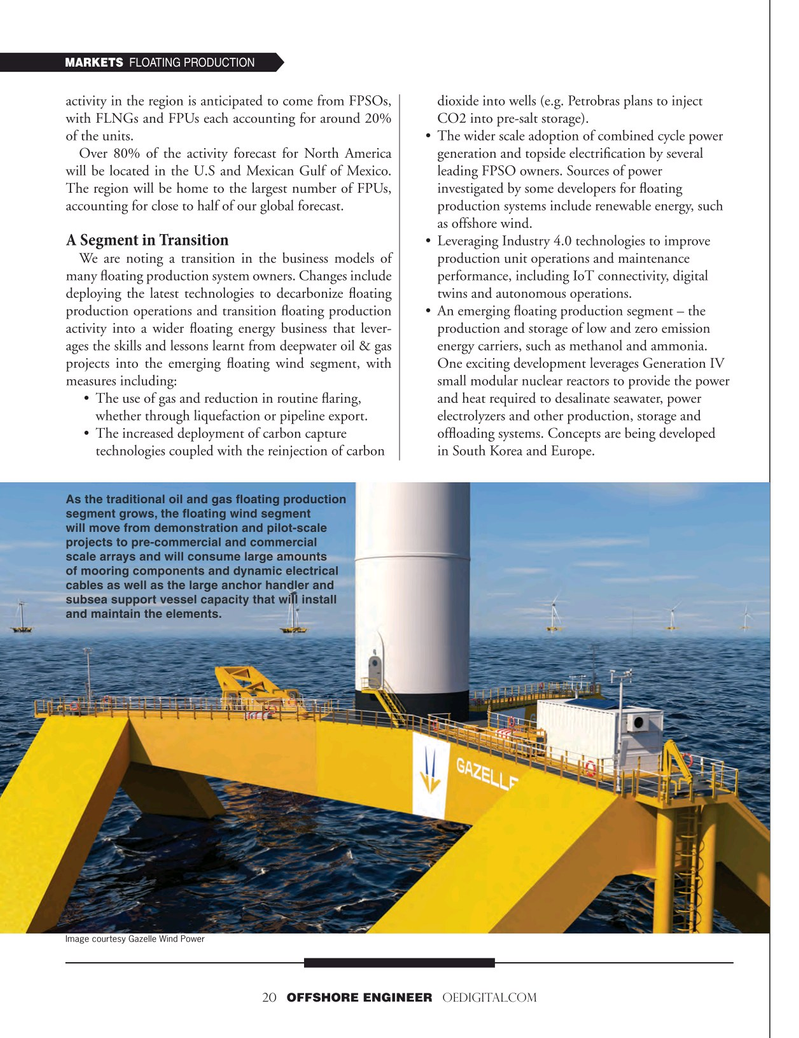
Page 20: of Offshore Engineer Magazine (Jan/Feb 2024)
Read this page in Pdf, Flash or Html5 edition of Jan/Feb 2024 Offshore Engineer Magazine
MARKETS FLOATING PRODUCTION activity in the region is anticipated to come from FPSOs, dio xide into wells (e.g. Petrobras plans to inject with FLNGs and FPUs each accounting for around 20% CO2 into pre-salt storage). of the units. • The wider scale adoption of combined cycle power
Over 80% of the activity forecast for North America generation and topside electrifcation by several will be located in the U.S and Mexican Gulf of Mexico. leading FPSO owners. Sources of power
The region will be home to the largest number of FPUs, inv estigated by some developers for foating accounting for close to half of our global forecast. pr oduction systems include renewable energy, such as offshore wind.
• Leveraging Industry 4.0 technologies to improve
A Segment in Transition
We are noting a transition in the business models of pr oduction unit operations and maintenance many foating production system owners. Changes include per formance, including IoT connectivity, digital deploying the latest technologies to decarbonize foating twins and autonomous operations. production operations and transition foating production • An emerging foating production segment – the activity into a wider foating energy business that lever- pr oduction and storage of low and zero emission ages the skills and lessons learnt from deepwater oil & gas energy carriers, such as methanol and ammonia. projects into the emerging foating wind segment, with O ne exciting development leverages Generation IV measures including: small modular nuclear reactors to provide the power • The use of gas and reduction in routine faring, and heat required to desalinate seawater, power whether through liquefaction or pipeline export. electr olyzers and other production, storage and • The increased deployment of carbon capture offoading systems. Concepts are being developed technologies coupled with the reinjection of carbon in S outh Korea and Europe.
As the traditional oil and gas foating production segment grows, the foating wind segment will move from demonstration and pilot-scale projects to pre-commercial and commercial scale arrays and will consume large amounts of mooring components and dynamic electrical cables as well as the large anchor handler and subsea support vessel capacity that will install and maintain the elements.
Image courtesy Gazelle Wind Power 20 OFFSHORE ENGINEER OEDIGITAL.COM

 19
19

 21
21